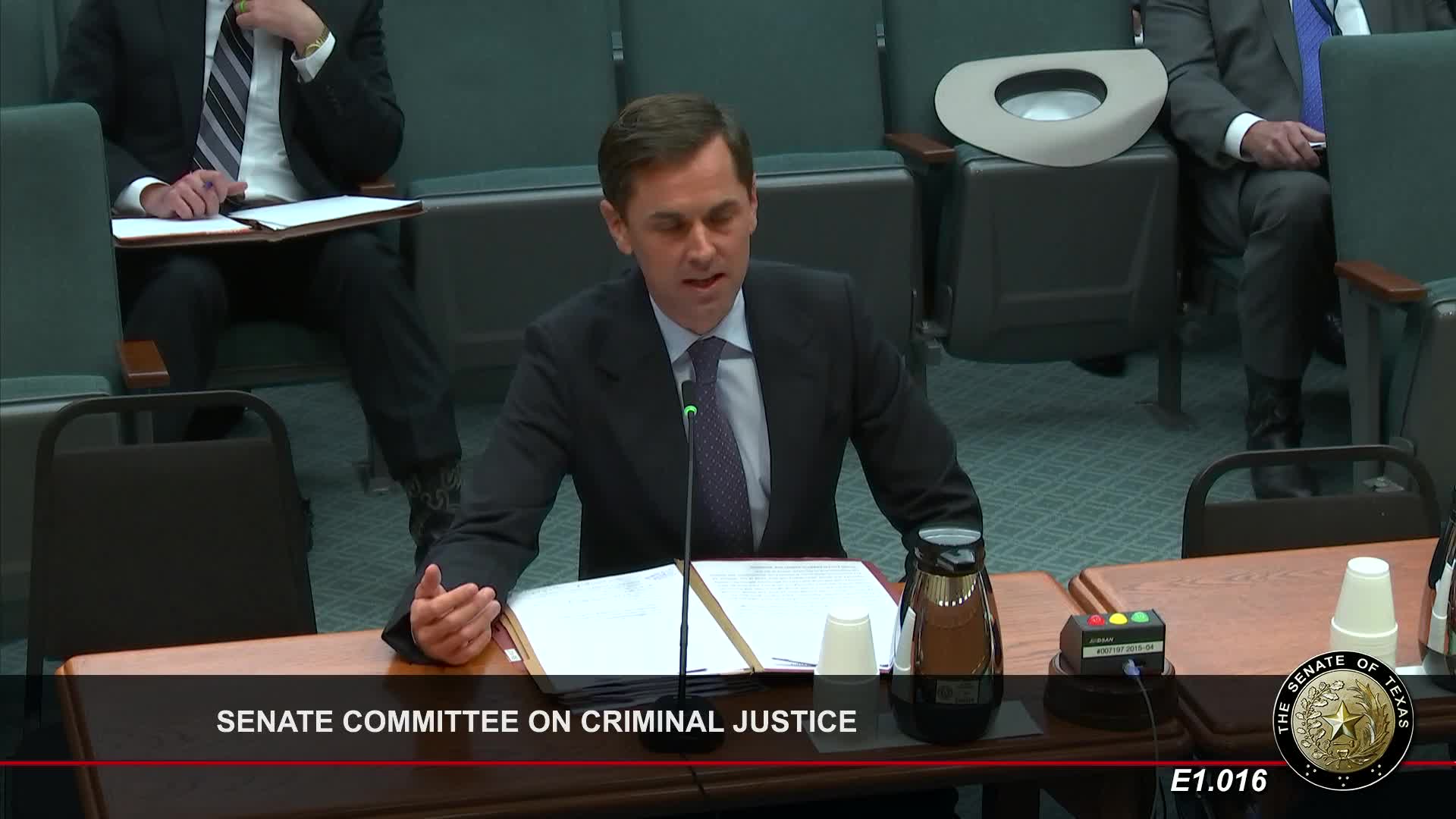Texas Senate advances bill to tighten protections against harmful material for children
March 04, 2024 | Committee on Criminal Justice, Senate, Legislative, Texas

This article was created by AI summarizing key points discussed. AI makes mistakes, so for full details and context, please refer to the video of the full meeting. Please report any errors so we can fix them. Report an error »

In a recent meeting of the Texas Senate Committee on Criminal Justice, lawmakers discussed critical measures aimed at enhancing the protection of children from harmful materials and performances. The focal point of the discussion was Senate Bill 412, which seeks to close significant loopholes in the current legal framework that allows for the distribution of harmful content to minors.
The bill's author emphasized the urgency of the issue, stating that protecting children from harm is one of the most sacred duties of legislators. The proposed legislation aims to clarify that the only acceptable affirmative defenses against charges related to harmful materials and performances involving children would be those involving judicial or law enforcement officers acting in their official capacities. This change is intended to narrow the overly broad current defenses that have been criticized for failing to adequately protect children from online exploitation and exposure to obscene content.
Concerns were raised during the meeting regarding the implications of removing broader affirmative defenses, particularly in educational contexts. Senator Ginoza highlighted the potential challenges educators might face when teaching sensitive subjects, such as anatomy, without crossing legal boundaries. The discussion underscored the need for a careful balance between protecting children and ensuring that legitimate educational activities are not inadvertently criminalized.
The committee acknowledged the importance of maintaining exceptions for law enforcement to effectively combat child exploitation while also recognizing the potential risks of overly broad definitions that could impact educational practices. The conversation reflected a growing consensus on the need for stricter regulations to safeguard children, while also ensuring that educational integrity is preserved.
As the committee continues to deliberate on Senate Bill 412, the outcome of these discussions could significantly reshape the legal landscape surrounding child protection in Texas, addressing both the urgent need for reform and the complexities involved in defining harmful materials. The committee's next steps will be closely watched by advocates and educators alike, as they seek to navigate the delicate balance between safeguarding children and supporting educational needs.
The bill's author emphasized the urgency of the issue, stating that protecting children from harm is one of the most sacred duties of legislators. The proposed legislation aims to clarify that the only acceptable affirmative defenses against charges related to harmful materials and performances involving children would be those involving judicial or law enforcement officers acting in their official capacities. This change is intended to narrow the overly broad current defenses that have been criticized for failing to adequately protect children from online exploitation and exposure to obscene content.
Concerns were raised during the meeting regarding the implications of removing broader affirmative defenses, particularly in educational contexts. Senator Ginoza highlighted the potential challenges educators might face when teaching sensitive subjects, such as anatomy, without crossing legal boundaries. The discussion underscored the need for a careful balance between protecting children and ensuring that legitimate educational activities are not inadvertently criminalized.
The committee acknowledged the importance of maintaining exceptions for law enforcement to effectively combat child exploitation while also recognizing the potential risks of overly broad definitions that could impact educational practices. The conversation reflected a growing consensus on the need for stricter regulations to safeguard children, while also ensuring that educational integrity is preserved.
As the committee continues to deliberate on Senate Bill 412, the outcome of these discussions could significantly reshape the legal landscape surrounding child protection in Texas, addressing both the urgent need for reform and the complexities involved in defining harmful materials. The committee's next steps will be closely watched by advocates and educators alike, as they seek to navigate the delicate balance between safeguarding children and supporting educational needs.
View full meeting
This article is based on a recent meeting—watch the full video and explore the complete transcript for deeper insights into the discussion.
View full meeting
